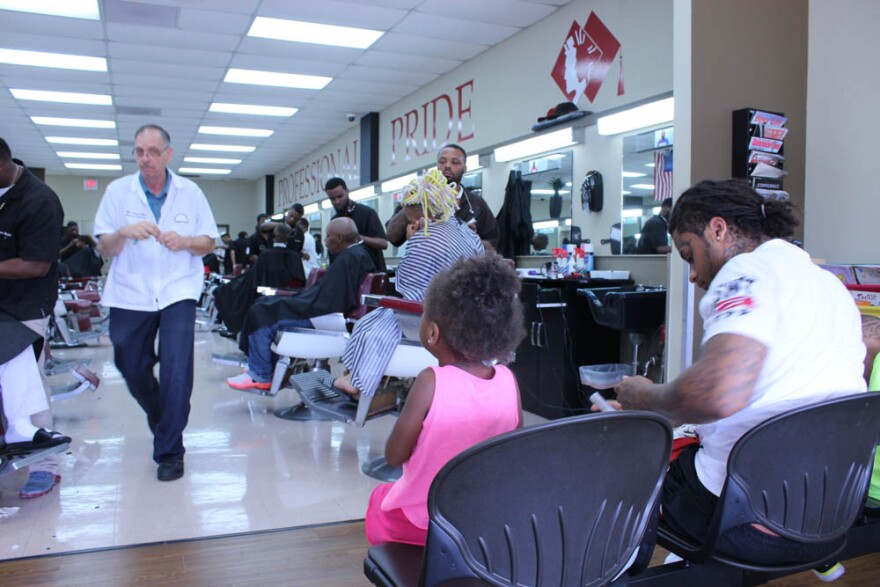According to the U.S. Department of Education, about 85 percent of black students K-12 scored below proficient in reading. Research shows poor reading skills puts kids at a greater risk for dropping out of high school. That's why one educator is determined to close that achievement gap by encouraging kids to read at the barbershop.
On a Friday morning, customers at the Ohio State College of Barber and Styling wait in the grey plastic chairs at the front of the salon. About 30 students are working the floor, practicing haircuts, shaves and styles for a discounted rate.

Five-year-old Andreas waits with his dad and his younger brother Deondre for a turn in the barber’s chair. To occupy his fleeting attention span, Andreas flips through a stack paperbacks kept on a mini-shelf for Barbershop Books.
Andreas points to a handful of books he’s already read, titles like “No David” by David Shannon and "Hi! Fly Guy" by Tedd Arnold.
Andreas admits his mom still does most of the reading while he follows along. But that doesn’t stop him from pulling a book from the shelf to look at the pictures.
Like many boys, Andreas gets his haircut two, maybe three times a month. It takes a few hours for the whole family to get a cut, and that means a lot of time hanging out in the waiting room.
David Gale, the school’s director of education, says more than a thousand kids come here for a haircut each month. When Columbus City Schools and city council announced their new partnership with Barbershop Books, Gale elected to be one of 10 Columbus barbershops to set up mini reading area.
“As far as this concept goes, there was nothing like this going on,” said Gail. “There’s magazines for adults, but nothing for the kids.”
The idea for Barbershop Books came about several years ago, when founder and chief reading inspirer Alvin Irby was working as a first grade teacher at a school in the Bronx, New York.
One day after school, Irby sat down for a haircut at the local barbershop when a student of his walked through the door.
“He kind of plops down on the couch and stairs out the window for like 10 or 15 minutes," said Irby. "I knew what his reading level was and I remember thinking to myself, ‘Man, he should really be practicing his reading right now.’”
Today Irby’s organization has setup about a dozen reading spaces in barbershops throughout New York City, and now Columbus.
The colorful kid-sized bookshelves hold a collection of several books—new, not donated.
Each reading space gets three new books a month and each titles is carefully selected.
Irby says they're tailored to meet the interests of young boys of color. He says the goal is about more than just improving a skill, but getting kids to read for fun.
“[It’s about] helping cultivate children’s reading identity and helping them to be able to say three words, ‘I am a reader,’” said Irby.
Irby says shaping that identity is the first step to closing the reading achievement gap for boys of color. One key to accomplishing that says Irby is finding more role models.
According to the Us Census, about half of all black kids are raised by single moms. Combined that with a shortage in teachers of color--the U.S Department of Education reports that only two percent of teachers are black men--and Irby says, there are thousands of boy of color who never see men like them who read.
“many of them conclude that that’s just not a part of who they are,” says Irby. “So Barbershop Books is really working to change that.”
Back at the Ohio State College of Barber and Styling, student Antonio Willborn has a five-year-old boy in his chair. Antonio carefully cuts the boy's hair with a set of clippers while the boy flips through a Legos book.
Willborn says, like most kids growing up, the barber was someone he admired.
“You wanted to be like them, you wanted to do the same thing, that’s how I started barbering,” said Willborn.
Willborn says barbers don’t often realize the impact they can have on their young customers. He says they watch them grown up and some barbers even become like part of the family.
“We can change the community; we can change how the young people view their lives,” said Wilborn.
And now, he says that includes encouraging them to read too.

